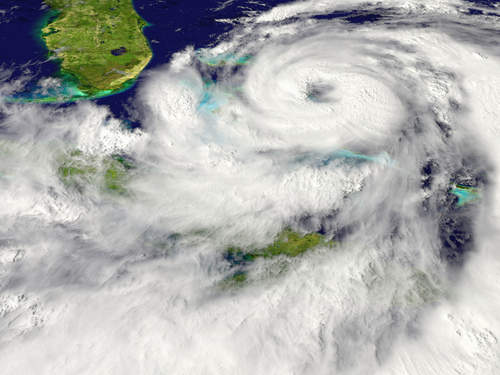October is usually one of the most active months for tropical cyclones in the western North Pacific. These storms can affect many countries with Pacific coasts including the Philippines, China, Korea and Japan. In 2013 there were eight tropical cyclones in this region in October, most of which developed into strong typhoons.
Since last week, Typhoon Phanfone has been developing in the western Pacific. Although initially far from land it has been taking a north-westward track as it has intensified and poses a threat for Japan at the weekend. On 2nd October winds were estimated at over 130 mph near the very small ‘pinhole’ eye seen in the satellite image. Phanfone has been maintaining strength since then, but the main threat comes from rain as the typhoon moves further north.
Typhoons in this region are renowned for producing large plumes of heavy rain which can propagate well to the north and east of the centre of the typhoon itself. Hence, heavy rain over southern Japan is likely even if the eye keeps offshore.
Elsewhere, Tropical Storm Simon has formed in the eastern North Pacific and may pose a threat to the Baja Peninsula of Mexico. It has been a very active hurricane season in this region. Only one more storm is required for the region to have produced the largest number of storms for 22 years.
Official warnings of west Pacific tropical storms are produced by the Japan Meteorological Agency and east Pacific warnings are produced by the US National Hurricane Center. The Met Office routinely supplies predictions of cyclone tracks from its global forecast model to regional meteorological centres worldwide, which are used along with guidance from other models in the production of forecasts and guidance.
Met Office StormTracker provides a mapped picture of tropical cyclones around the globe with access to track history and six-day forecast tracks for current tropical cyclones from the Met Office global forecast model and latest observed cloud cover and sea surface temperature. They also provide updates on current tropical storms via @metofficestorms on Twitter.
© Met Office






